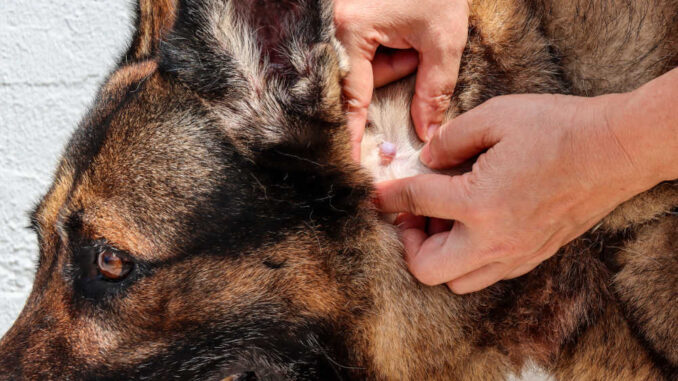
This article was updated on May 5th, 2023
Canine cysts of the head and neck are fairly common and most of them don’t cause serious problems. There are several different types of cysts in dogs. Usually they’re not painful: a small pea sized cyst on the head or the back of the neck doesn’t typically hurt. Even larger cysts are not usually that bothersome to most dogs.
Most cysts of the skin form when sweat or sebaceous gland ducts are blocked with a buildup of sebum (oil produced to protect and moisturize skin), keratin (protein found in hair, nails and skin), dead skin cells and dirt. Most cysts are benign, but all lumps, bumps and cysts found on your pooch should be checked by a veterinarian. Cancerous tumors are very good at mimicking benign growths.
Diagnosing the cyst on your dog’s neck or head
1. Sebaceous cysts
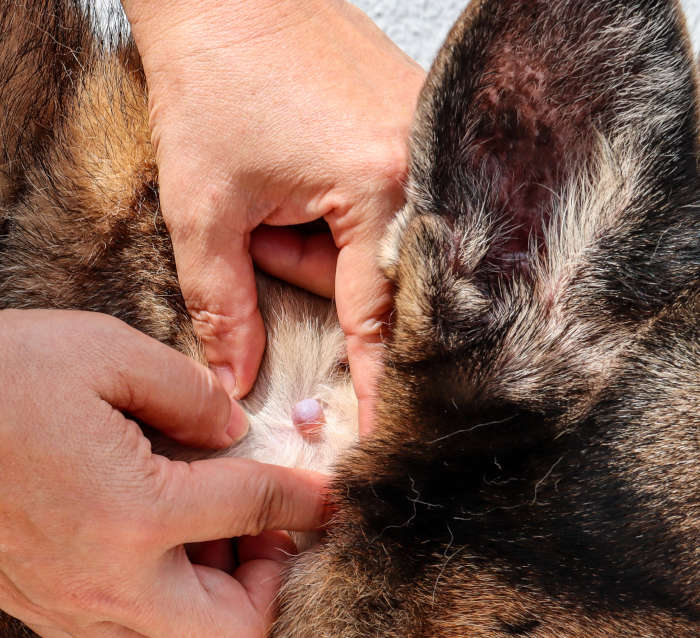
A sebaceous gland produces oil to moisturize the skin. When the opening to this gland is blocked due to excess build up of oil (sebum), skin trauma or inflammation a cyst forms in and around the gland.
Some sebaceous cysts contain only sebum. Most also contain other waste such as excess keratin or dead cells.
A sebaceous cyst is usually small (approximately 1/4 to 1/2 inch). It is attached to the outer surface of the skin and is typically somewhat round. Its color usually matches the color of the surrounding skin, but it may also be a pinkish white.
Treating a sebaceous cyst: If a sebaceous cyst is not causing any pain or discomfort, and is not infected you can choose to leave it alone. If it becomes a problem, becoming red and inflamed or ulcerated, surgical excision is the recommended treatment.
2. Follicular cysts
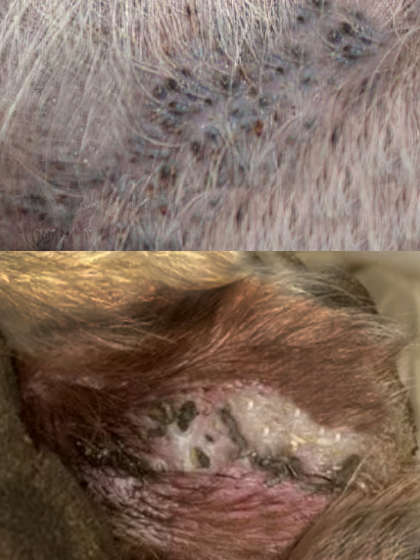
When the base of a hair follicle becomes inflamed and dilated the hollow space the follicle sits in collects body oil, dirt, sweat, excess cellular debris and sometimes keratin (a protein that helps form skin, hair and nails). Eventually a cyst is formed.
A follicular cyst is somewhat round and has a nodular appearance. It may be tinged blue or it may be darker, like a black head. Its size ranges from 1/4 inch to approximately 2 inches. A follicular cyst is found on or just under the skin. Sometimes follicular cysts can burst and ooze. The contents may be black or white or yellow. It may be fluid or have a thick, pasty consistency. It often has an unpleasant smell.
Treating a follicular cyst: Follicular cysts often occur secondarily to a preexisting skin condition. If the cyst or cysts are not extensive and not bothering your dog your veterinarian may prescribe antibiotics, anti-inflammatory and medicated shampoos. Once the cysts resolve the next step is to treat the allergy, bacterial or fungal infection causing the underlying dermatitis that led to the cyst development.
Surgical removal is recommended if medical treatment is not working, the cyst has ruptured or is bothersome to your pooch. Or if the cyst reoccurs after initial treatment. There is no “home remedy” for follicular cysts. Medicated shampoos may be helpful, but veterinary care is recommended for a true resolution to the problem.
3. Comedones
Comedones or blackheads are clogged pores. They are seen as small, black slightly raised bumps. They are very similar to follicular cysts but have a wide opening on the surface of the skin that allows them to be manually squeezed and the thick contents expelled.
Treating comedones: It is tempting to treat comedones on your own, squeezing out the black debris. This is not recommended. You may think you are dealing with a blackhead when it is really something else. Also, you may cause inflammation or introduce bacteria causing a deep infection by squeezing them.
Once your veterinarian has diagnosed comedones, they may recommend some at home treatments for you. Medicated shampoos containing benzoyl peroxide are indicated. Make sure you use one specific to dogs. If infected, your veterinarian may prescribe antibiotics.
Schnauzer Comedone Syndrome: Schnauzers, Cairn Terriers and other wire-haired terriers sometimes develop diffuse areas of blackheads over their neck and back. It is unknown why these breeds seem predisposed to this syndrome.
Your veterinarian may need to take skin samples to diagnose this syndrome, rule out other reasons for the comedone formation and to decide if antibiotics are needed. This syndrome can’t be cured, but can be managed and kept under control. Antiseborrheic shampoos or ointments are used to clear up outbreaks. If a bacterial infection is present antibiotics will be prescribed.
4. Dermoid cysts
A dermoid cyst is a congenital (birth) defect that occurs when there is an abnormal closure of the epidermis. It is seen mostly in Rhodesian Ridgebacks and Kerry Blue Terriers.
These cysts are usually found along the center of the back. They look like tubular indentations of the skin. They range from a mild irritant that produces a small amount of fluid to a larger abscessed cyst full of hair, keratin (protein necessary for hair and nail growth) and sebum. When found deeper in the body they can cause neurological problems.
Treatment: When superficial and mild they can be managed with regular gentle cleansing. Once abscessed, dermoid cysts require surgical excision. The deeper cysts that cause neurological problems are not generally associated with skin lesions.
5. Meibomian cyst
Sometimes a small cyst called a meibomian cyst or chalazion forms on a dog’s eyelid. It can affect either the upper or lower eyelid. A chalazion forms when a meibomian gland on the eyelids becomes clogged.
A meibomian cyst appears as a small innocuous bump or a tiny pimple. These cysts may resolve on their own so if not causing a problem the best course of action after diagnosis may be to do nothing. Unfortunately they sometimes can rub the eye scratching the cornea which is irritating and painful. The best option in this situation is surgical or laser excision.
There is also a cyst that occurs in the iris of the dog’s eye. It is called a uveal cyst. You can click here to learn about eye cysts.
Diagnosis a cyst at the vet
Your veterinarian will examine your dog’s cyst making note of its size, shape, texture and location. They may be comfortable with a presumptive diagnosis based on their findings. Or they may need to do further diagnostics.
To get a definitive diagnosis of a canine cyst, your veterinarian will need to take a small sample of either the contents of the cyst or tissue from the wall of the cyst. This can be done via fine needle aspirate where a small needle is inserted into the cyst or cyst wall. If that does not yield the diagnosis then a larger sample may be needed requiring an excisional biopsy. Your dog may need to be sedated for a biopsy.
The average price for a fine needle aspirate is $20-$100 for the obtaining of the sample and reading the sample slide. A biopsy is anywhere from $400-$800. The price is greater than the FNA due to the need for sedation and the method for preparing the tissue sample. The price to remove a small cyst ranges from $250-400.
Help! This weird cyst on my dog’s neck is leaking!
As veterinarians, we see a lot of cysts and lumps in our canine patients. When a cyst is leaking fluid, pus or thick discharge, it can be both unpleasant and alarming for the owner. However, a burst cyst on your dog’s head or neck is not a life-threatening emergency. There’s no need to rush your pooch into a clinic at two in the morning, but your dog will need to be seen in a reasonable amount of time, within a day or two of the cyst rupturing. Please read our veterinarian FAQ about burst cysts.
In the meantime, clean the cyst with a very mild, diluted soap, rinse it well and pat dry the area. You’ll need to keep your dog from licking or pawing at the cyst until you get to the vet. See this link on how to make a homemade e collar. Please be careful when placing an e-collar on your dog. Make sure you can easily get two fingers in between the collar and your dog’s neck and that nothing is pushing their throat uncomfortably.
A dog should be able to breathe and sleep comfortably with an e collar on. Depending on where the cyst is on your dog, an e collar may be a bad option. If the collar rubs up against the irritated area you can try putting an old t shirt on your dog, or a comfortably fitting soft wrap with clean, non-adhering bandage material.
Related posts:
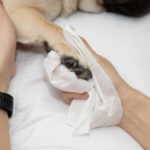 4 Cysts Often Found on Dog Paws [With Pictures & Vet Advice] - Ahh dog feet, giant Great Dane Marmaduke paws, tiny terrier tootsies, the puffy, fluffy white feet of a Bichon Frisé.… [...]
4 Cysts Often Found on Dog Paws [With Pictures & Vet Advice] - Ahh dog feet, giant Great Dane Marmaduke paws, tiny terrier tootsies, the puffy, fluffy white feet of a Bichon Frisé.… [...] Eyelid Cysts in Dogs: FAQ With Our Veterinarian - Eyelid cysts are very common, particularly in older dogs. Oftentimes, an owner is unaware that they’re present as they can… [...]
Eyelid Cysts in Dogs: FAQ With Our Veterinarian - Eyelid cysts are very common, particularly in older dogs. Oftentimes, an owner is unaware that they’re present as they can… [...] Burst or Ruptured Cysts on Dogs: Our Vet Shares What to Do - When a dog does come into my clinic with a ruptured cyst, the owner can be quite alarmed by the… [...]
Burst or Ruptured Cysts on Dogs: Our Vet Shares What to Do - When a dog does come into my clinic with a ruptured cyst, the owner can be quite alarmed by the… [...] Dog Hair Follicle (Follicular) Cysts: Pictures + Vet FAQ - It is extremely common for dogs to develop lumps and bumps anywhere on their body. They can range in size,… [...]
Dog Hair Follicle (Follicular) Cysts: Pictures + Vet FAQ - It is extremely common for dogs to develop lumps and bumps anywhere on their body. They can range in size,… [...]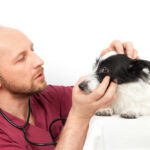 Eye Cysts in Dogs: Pictures & Vet Advice - Introduction: about eye cysts in dogs Finding an unexpected growth or mass on your dog can be distressing, but it… [...]
Eye Cysts in Dogs: Pictures & Vet Advice - Introduction: about eye cysts in dogs Finding an unexpected growth or mass on your dog can be distressing, but it… [...]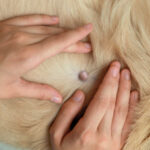 6 Types of Cysts in Dogs [With Pictures], and How to Treat - As a practicing veterinarian for over 17 years, I have treated hundreds of dogs with cysts. Cysts are a very… [...]
6 Types of Cysts in Dogs [With Pictures], and How to Treat - As a practicing veterinarian for over 17 years, I have treated hundreds of dogs with cysts. Cysts are a very… [...]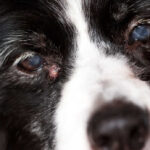 Sebaceous Cysts in Dogs [Pictures & Veterinarian Advice] - Sebaceous Cysts in dogs is one health issue for which dog owners should be watchful, but thankfully, they are rarely… [...]
Sebaceous Cysts in Dogs [Pictures & Veterinarian Advice] - Sebaceous Cysts in dogs is one health issue for which dog owners should be watchful, but thankfully, they are rarely… [...]Disclaimer: This website's content is not a substitute for veterinary care. Always consult with your veterinarian for healthcare decisions. Read More.

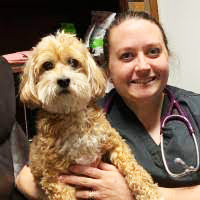

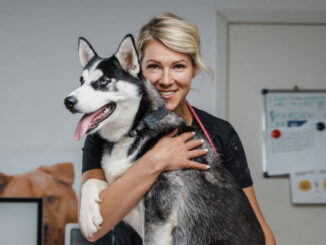
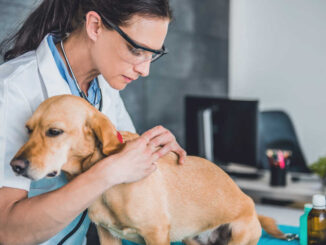
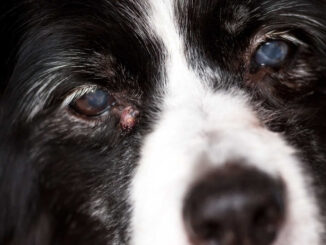
Be the first to comment